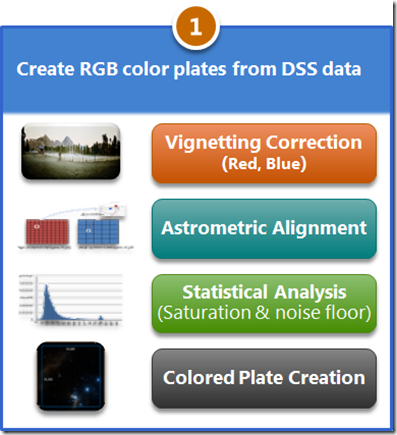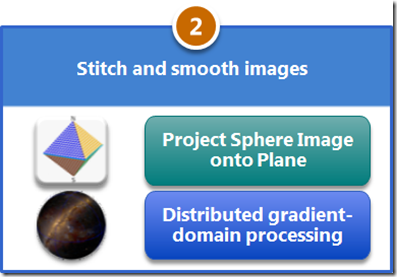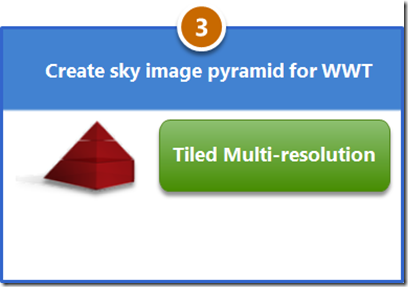TeraPixel–Largest, Smoothest Image in the World
As part of the WorldWide Telescope Apogee release yesterday we also released TeraPixel – the largest, smoothest image of the sky – a spherical image that we believe is the worlds largest image available for anyone to view.
First thing to understand how large a TeraPixel image is – it’s a Million by Million pixels in size – to be able to view an image of that size at it’s highest resolution you would need 500,000 HDTVs. So one challenge was not just stitching the images together – but to actually make it seamless and smooth – and that was the challenge taken on by a small team about 6 months ago. 
The TeraPixel project began with data from the Digitized Sky Survey, which is a collection of 1791 pairs of red-light and blue-light images taken over a period of 50 years by two ground based survey telescopes— the Palomar telescope in  California, United States and the UK Schmidt telescope in New South Wales, Australia. The Palomar telescope took photographs of the Northern sky, and the Southern sky down to around 30 degrees south. The UK Schmidt telescope took photographs of the rest of the Southern sky.
California, United States and the UK Schmidt telescope in New South Wales, Australia. The Palomar telescope took photographs of the Northern sky, and the Southern sky down to around 30 degrees south. The UK Schmidt telescope took photographs of the rest of the Southern sky.
To create the TeraPixel – there were 3 major computational and data intensive steps:
- Create color plates from DSS data
- Stitch and smooth images
- Create sky image pyramid for WWT
The Vignetting Correction was need to because the corners of end up being less exposed – so a flat field was created to normalize the intensity of the images.
Astrometric Alignment created a new blue plate so that the plates had the same size and that a given pixel location from the two plates referred to the same position in the sky.
The Green channel was created from the two plates and then the saturation and noise were corrected with the new plates created.
To stitch the images together the images were needed to be projected from a sphere onto a plane – a square of 1 million by 1 million pixels.
Due to differences in exposure and simple juxtaposition of the color plates the resulting stitch had undesirable seams. To clean up the image – the smoothing was accomplished by Distributed gradient-domain processing code from a collaboration between MSR (Hughes Hoppe) and JHU (Michael Kazhdan) – the paper appeared in ACM Transactions on Graphics (March 2010)
Finally the resulting sky image was turned into a tiled multi-resolution pyramid. Below you can see the differences in the old image and the newly released one.
All of this large-scale data aggregation was solved with integrated set of Microsoft technologies:
- Windows HPC & DryadLINQ => Efficient and robust execution across a cluster of machines
- .NET Parallel Extensions => Faster execution on a multi-core machine
- DryadLINQ => Concise code for large-scale data aggregation
All of this was managed and coordinated by Project Trident: A Scientific Workflow Workbench
Take a look at TeraPixel – enjoy the beauty of the images – and get lost in space.




